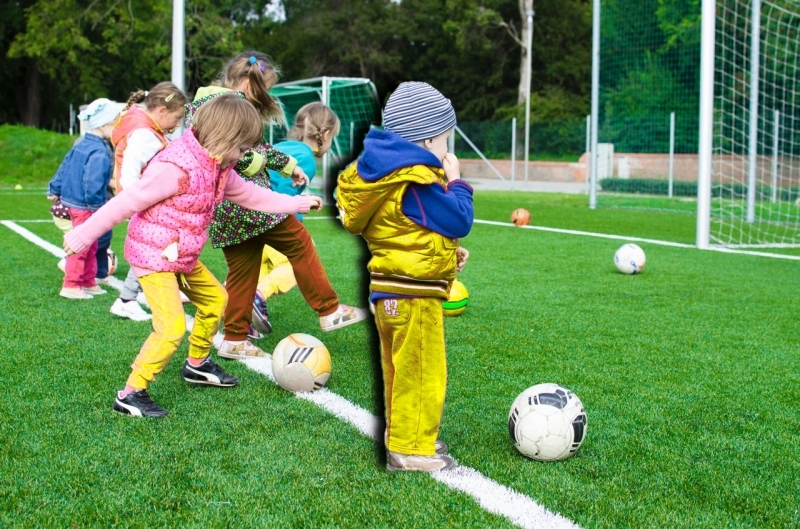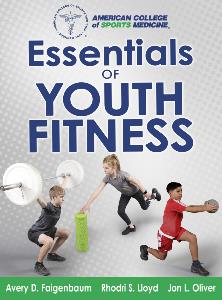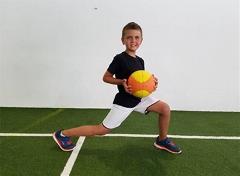Avery D. Faigenbaum, Ed.D., FACSM, Rhodri S. Lloyd, Ph.D., Jon L. Oliver, Ph.D. |
Jan.
17, 2020

Debunking 10 Common Myths and Misperceptions about Youth Physical Activity
Key Messages:
1. Regular participation in moderate to vigorous physical activity (MVPA) including muscle and bone strengthening exercise is known to improve cardiorespiratory and neuromuscular fitness and health, while providing the potential to also improve emotional, social and cognitive well-being.
2. The impact of physical inactivity during the growing years on lifelong pathological processes and associated health care concerns have created an urgent need to dispel common myths and misperceptions associated with youth physical activity.
Regular participation in active play, exercise, and sport activities in the context of family, school and community programs is recognized as a powerful marker of health in children and adolescents. Regular participation in moderate to vigorous physical activity (MVPA) including muscle and bone strengthening exercise is known to improve cardiorespiratory and neuromuscular fitness and health, while providing the potential to also improve emotional, social and cognitive well-being. Furthermore, girls and boys who participate in a variety of physical activities early in life tend to be more active later in life. Yet a growing number of modern-day youth are failing to accumulate at least 60 minutes of MVPA daily and too many girls and boys are disconnected from school- and community-based exercise and sport programs.
The impact of physical inactivity during the growing years on lifelong pathological processes and associated health care concerns have created an urgent need to dispel common myths and misperceptions associated with youth physical activity. Concerted efforts are needed to design evidence-based youth exercise and sport programs and inform parents and providers about the pleiotropic benefits of daily MVPA that is consistent with the developmental needs, abilities and interests of all children and adolescents. Without a change in our current philosophy, it is likely that the current trajectory of low physical inactivity will continue unabated and new health care concerns will begin to emerge.
1. Children “outgrow” physical inactivity.
Inactive children tend to become inactive adolescents who lack the requisite competence and confidence in their physical abilities to participate regularly in exercise and sport activities. Since physical activity is a learned behavior that is influenced by a child’s family, friends and environment, girls and boys need regular opportunities to engage in the right amount of MVPA early in life to prevent the inevitable cascade of adverse health outcomes later in life.
2. Continuous physical activity is best.
Watching girls and boys on a playground or sports field supports the premise that all types of physical activity – whether continuous, sporadic or in bouts – can offer observable health and fitness value to children and adolescents. The key is to expose youth to active play, exercise and sport activities that are physically challenging and mentally engaging, and this will often come in the form of intermittent exercise.
"girls and boys who participate in a variety of physical activities early in life tend to be more active later in life"
3. Children are miniature adults.
Children are physically and psychosocially less mature than adults. As such, girls and boys are physically active in different ways and for different reasons than older populations. While adults may want to improve their cardiometabolic health or body composition, most children participate in exercise and sport programs to have fun, make friends and learn something new.
4. Fundamental movement skills are innate.
Just like the skills of reading and writing, fundamental movement skills such as jumping, kicking and throwing are learnt movement patterns that should be practiced and reinforced with qualified instruction throughout the growing years. The early years of life are an ideal time to capitalize on the plasticity of the neuromuscular system to adapt to motor skill training. As such the need to expose children and adolescents to a variety of different activities to help develop movement skills should be recognized in national physical activity guidelines.
Want more from these authors? Get your free sample download of ACSM's Essentials of Youth Fitness

5. Resistance training is unsafe for children.
With qualified instruction and technique driven progression, resistance training can be a safe, effective and enjoyable activity for children. Resistance training can include simply working against body weight as well as working against external loads, such as medicine balls, resistance bands or free weights. The belief that resistance training will harm the developing skeleton is inconsistent with the needs of modern-day youth. In fact, resistance training is a potent stimuli for strengthening muscle and bone and can help youth achieve the global physical activity recommendation of partaking in muscle and bone strengthening exercise at least three times per week.
6. Start training in high school.
Notwithstanding the potential benefits of exercise training for adolescents, training-induced gains in physical fitness are also observable in young children. Since positive behaviors established early in life tend to track or carry over into adulthood, the best approach is to expose young girls and boys to skill-building games and exercise programs early in life.
7. Sports practice is enough.
While sports provide a needed opportunity for MVPA, sports practice is often insufficient to accumulate enough daily physical activity. Girls and boys should be physically active throughout the whole day with active transportation, physical education, recreational exercise and outdoor play activities.
8. Young athletes should specialize.
Early sports specialization has been linked with increased injury risk and higher rates of dropping out of sport. Greater sport diversification early in life – tempered with appropriate rest and preparatory conditioning – develops physically literate youth who possess a diverse range of movement skills that facilitate lifelong engagement in exercise and sport activities.
9. Focus on the physical.
Youth physical activity is not just about accumulating 60 minutes of MVPA daily. Learning a variety of movement skills, discovering special talents and fostering health behaviors are equally important strategies for sparking an ongoing interest in active play, exercise and sport activities. This is where the quantitative aspects of youth physical activity need to be balanced with the qualitative aspects of motivation, inclusion, and enjoyment.
10. Long-term athletic development is just for young athletes.
All girls and boys should participate in exercise and sport programs that are purposely designed to enhance their ability to move competently, confidently and consistently in a variety of settings with speed, style and precision. Because athleticism is grounded in both health- and skill-related components of physical fitness, the concept of long-term athletic development should be applied to inactive youth as well as young athletes.
Authors:
Avery D. Faigenbaum, Ed.D., FACSM is a full professor in the department of health and exercise science at The College of New Jersey. His research interests focus on pediatric exercise science, resistance exercise, and preventive medicine, and he is devoted to bridging the gap between the laboratory and the playing field.
Rhodri S. Lloyd, Ph.D., is a reader in pediatric strength and conditioning and the chair of the Youth Physical Development Centre at Cardiff Metropolitan University. He also holds a research associate position with Auckland University of Technology. Lloyd’s research interests surround the impact of growth and maturation on long-term athletic development and the neuromuscular mechanisms underpinning training adaptations in youth.
Jon L. Oliver, Ph.D., is a professor of applied pediatric exercise science at Cardiff Metropolitan University, where he cofounded the Youth Physical Development Centre. He is also an adjunct professor at the Sport Performance Research Institute New Zealand (SPRINZ). His research focuses on youth physical development across performance, injury, and health perspectives, with an emphasis on the role of strength and conditioning to promote athletic development at all levels.
View more from Avery D. Faigenbaum

Resistance Training for Kids: Right from the Start.